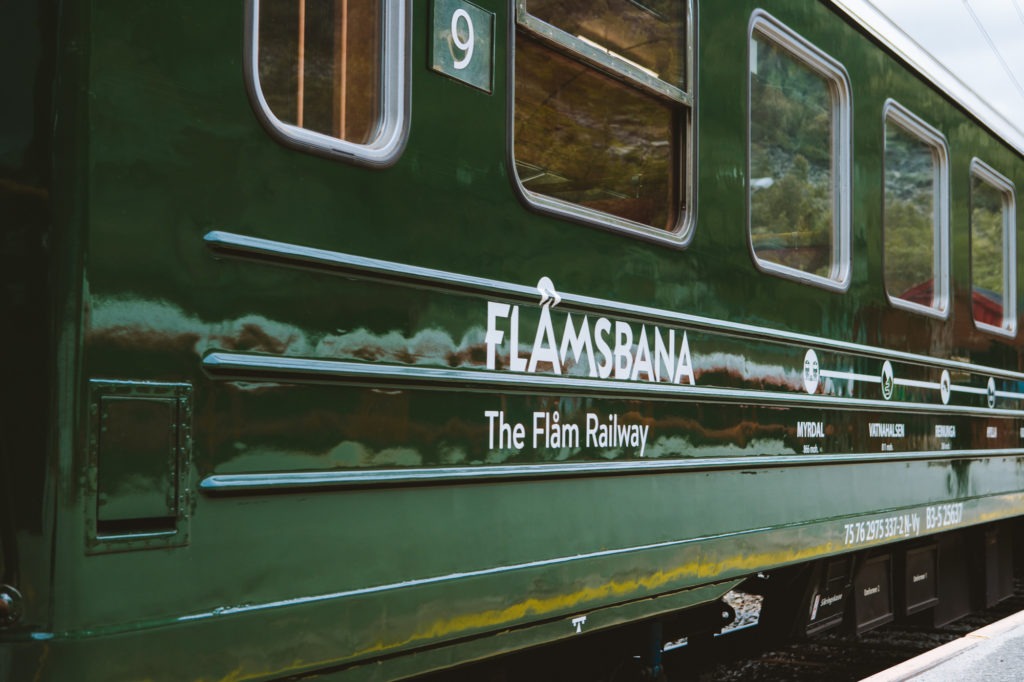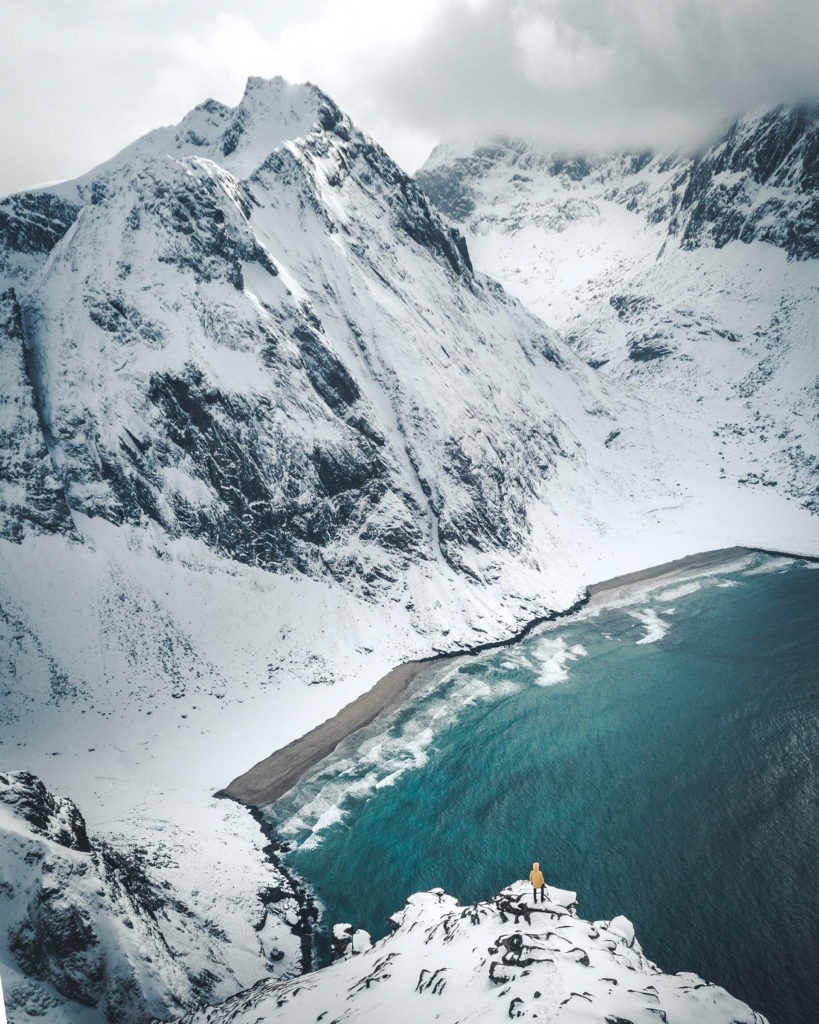“All aboard” the conductor shouts. He makes sure no one is entering or exiting the train, then he blows a whistle and leaps onto the stairs and enters the front carriage. The train starts moving, slowly but surely. We are now leaving Myrdal station, a station in an empty village 866 metres above mean sea level. Right next to the station is a tunnel, the first of many. We enter it, and after a few minutes, we are out. Then we already see why Flåmbanen is considered one of the world’s most beautiful train journeys.
The train tracks curve through the mountains and valleys. It is late summer, so the trees and fields are still vibrant green. And it has rained for a few days, so the waterfalls are spitting out tonnes upon tonnes of water. In an hour we will be at Flåm, a town almost at sea level, so the descend will be steep. We pass deep valleys, tall mountains, large waterfalls, and small houses and cabins along the way. Each carriage is fitted with two monitors showing facts about the line and its history, and over the speaker system it is announced every time we pass a great view or landmark.
“You’ve heard the saying; The journey is the destination, right? Well, this has to be where they invented that saying.
Overheard conversation between British tourists
Some stations are no larger than a large shed or small cabin.
Some call the Flåm Railway “the 20-line” because a recurring number in the Flåm Railway’s history is 20.
The line is 20 kilometres long, featuring 20 tunnels. It took 20 years to build, with 120 to 220 workers working shifts day and night. To top it off, the construction cost 20 million Norwegian kroner. During the late 1800s the planning of a railway between Norway’s two largest cities, Oslo and Bergen started. Included in the comprehensive plan was two short branch lines, one to each of Norway’s largest fjords, Sognefjord and Hardangerfjord. Flåm is located relatively far into Norway’s largest and deepest fjord, Sognefjord, as well as close to Myrdal and where the line was planned to go. Thus making it the obvious choice for a connected branch station. The Flåm Railway was for long used mainly for passenger transport corresponding with the Bergen Line. Although they are still corresponding, today the Flåm Railway is mostly a tourist attraction rather than a key transportation method. In the last few years, the Flåm Railways has seen up to a million passengers a year.
The train is fairly empty today. Except what seems to be two locals, everyone spends most of the time enjoying the view or capturing the moment with cameras in different sizes. Two of the people making a digital memory of the ride is Hansi and his friend Fynn, two german tourists taking a detour on their way from Bergen to Oslo. They are train enthusiasts and have interrailed all across Europe. Just halfway through the ride Hansi is sure that the Flåm Railway is a good contestant to become his favourite train line.
“This is not just a journey, it is an experience”
Hansi, German Tourist
Interesting read? Here at Nuet, we publish weekly blog posts about everything Scandinavian. Read other interesting posts at nuetaquavit.kinsta.cloud/stories and follow our Instagram @nuetaquavit to get instant updates on new posts straight to your feed.













